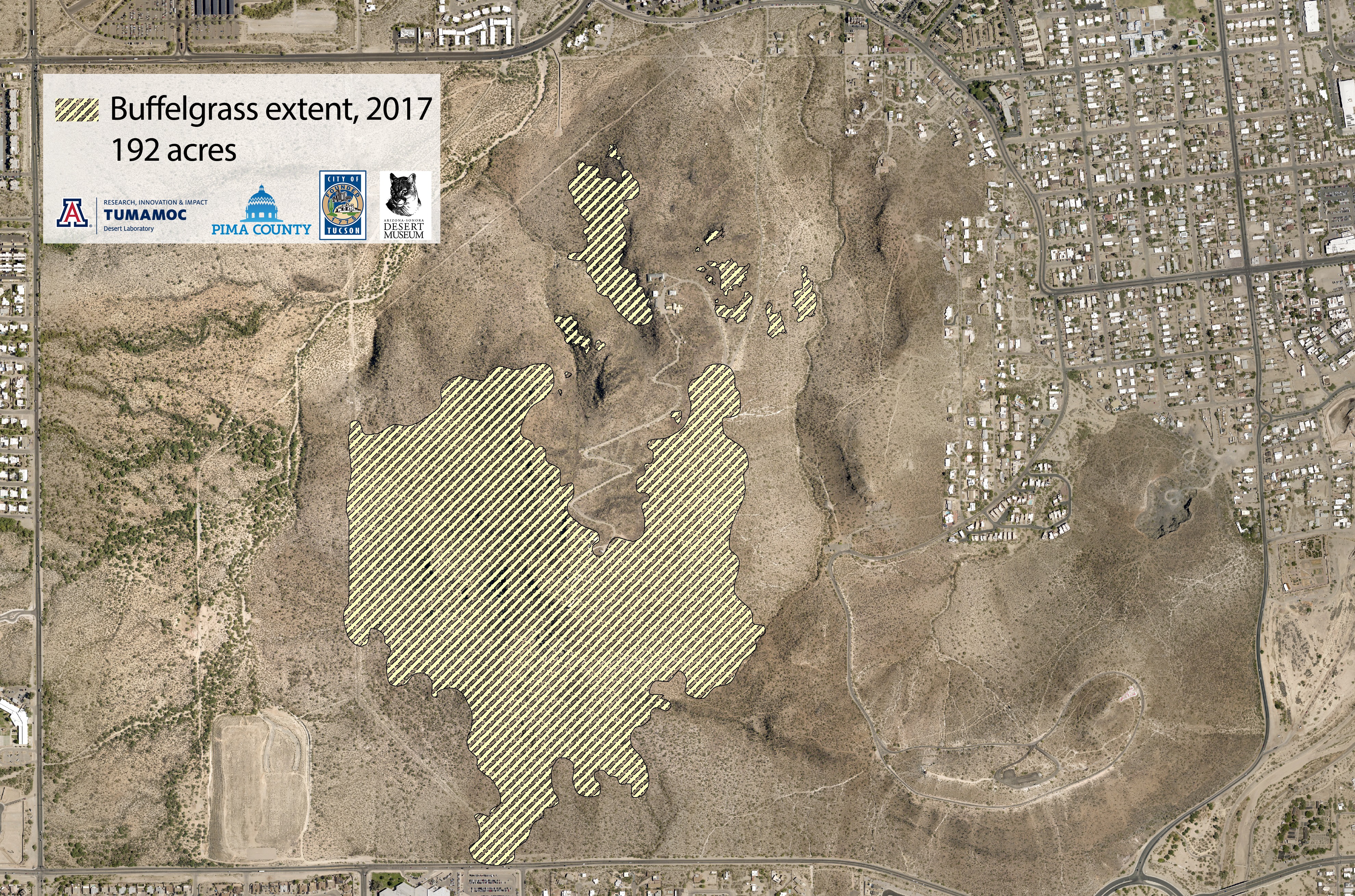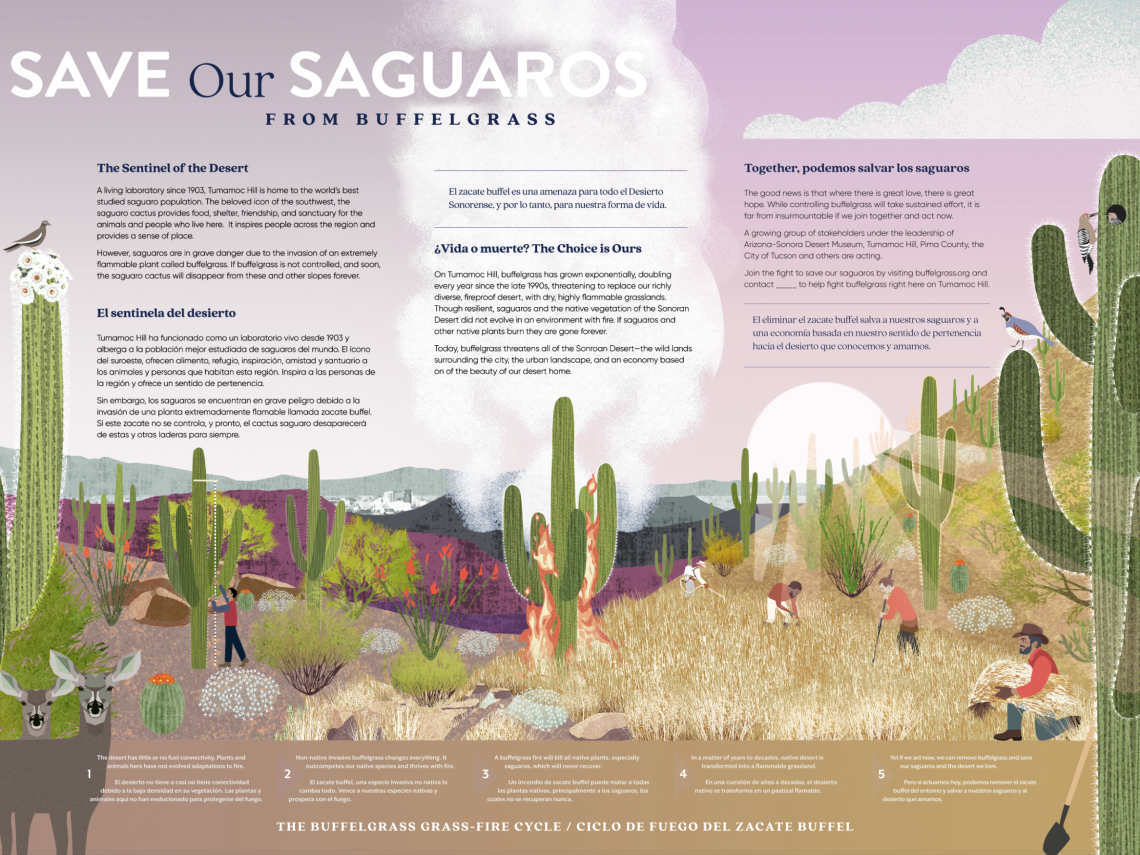One of the greatest potential agents of change in the Sonoran Desert is the exotic species buffelgrass. It has the capacity to transform the desert to a grassland by out-competing native plant species and spawning a fire regime native species cannot withstand. Tumamoc Hill is in the crosshairs of this harbinger of the Anthropocene. In 1983, several small patches of the non-native buffelgrass (Cenchrus ciliaris) were found on Tumamoc Hill. By 1998, those patches had expanded to over 90 continuous acres, and by 2017 had become 192.
This and other invasive species introduce a fire regime to the Sonoran Desert that eliminate natives in favor of invasive grasses, a process called the grass-fire cycle.
Recent Publication by Hovanes, et al. School of Natural Resources and the Environment with research conducted at the Desert Laboratory on Tumamoc Hill:

The Desert Laboratory is actively working with the Arizona-Sonora Desert Museum to use Tumamoc Hill as a model site for control and restoration. Starting in 2016 and every summer since, the Lab and the Museum have been controlling buffelgrass on Tumamoc Hill, reducing the acreage that became infested by this aggressive species.

The Lab is also actively collaborating with a large team of University and governmental researchers and land managers to better understand the expanding threat of fire in the desert.
An overview of buffelgrass and the Lab’s conservation efforts is part of the Tumamoc Tour.
The Researchers
Research - Bufflegrass and Fire in the Desert


